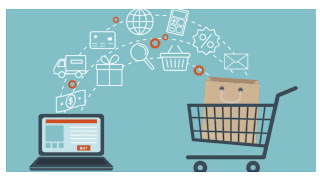A Complete Guide To Ecommerce
E-commerce involves the buying and selling of goods or services through electronic systems. This includes the Internet and other computer networks. The volume of trade conducted electronically has grown tremendously since the early days of the Internet and the growth will continue. To be competitive, most businesses must participate in some form of electronic commerce.
Much of e-commerce is conducted entirely electronically, for virtual goods such as music downloads and e-books. However, the majority of e-commerce involves the transfer of physical goods in some form. Online retailers are sometimes referred to as e-retailers and online retailing is sometimes referred to as e-tail.
The concept of e-commerce has changed over the last 30 years. Initially, e-commerce meant facilitating commercial transactions by electronic means. This included sending business documents such as orders or invoices electronically. The development and acceptance of credit cards, ATMs and telephone banking in the 1980s were also forms of e-commerce.
Here are some of the many benefits of e-commerce. Lower transaction costs - if an e-commerce site is implemented properly, the internet can significantly reduce both the cost of taking orders and the cost of customer service by automating processes.
More purchases per transaction - Amazon, for example, offers a capability that no regular store offers. When you read the description of a book, you can also see what other people have bought who have ordered that book. Because of these features, people often buy more books than they would in a regular bookstore.
More customer information - A website that is well integrated into the business cycle can provide the customer with more information than was previously available. For example, many businesses offer customers the ability to track their orders so they can see exactly where their order is at any given time.
People can shop in different ways. Traditional mail order introduced the concept of convenient shopping from home. E-commerce offers the same luxury, but with some new features. These include
Ability to place an order for several days
Ability to configure products and view current prices
The ability to easily create complex custom orders
The ability to easily compare prices from multiple suppliers
Ability to easily search large catalogues.
The Kiboeclipse online training platform will really help you to improve profit in your e-commerce business.
Larger catalogues: a company can create a catalogue online that would never fit in a standard mailbox. For example, the millions of books sold by Amazon could not realistically be included in a physical catalog.
Improved customer interaction - With automated tools it is possible to interact with the customer at almost no cost. Many companies email the customer when the order is confirmed, when the order is shipped, and when the order has arrived. This information can reassure the customer and increase their confidence in the process. A satisfied and reassured customer is more likely to buy something from the company in the future.


Comments
Post a Comment